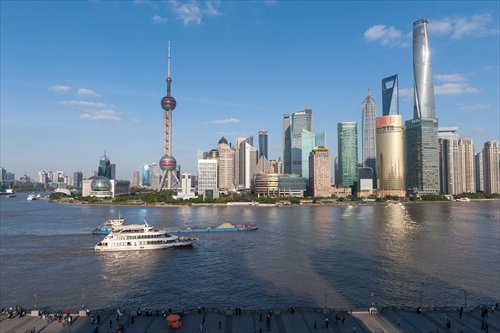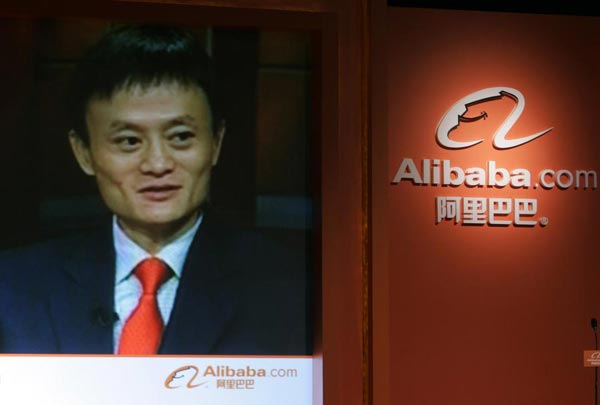US Private Equity Soars While China Stalls
–
In 2014, the gap between the performance of the private equity industry in China and the US opened wide. The US had a record-breaking year, with ten-year net annualized return hitting 14.6%. Final data is still coming in, but it appears certain US PE raised more capital more quickly and returned more profits to LPs than any year previously. China, on the other hand, had another so-so year. Exits picked up over 2013, but still remain significantly below highs reached in 2011. As a result profit distributions to LPs and closing of new China-focused funds are also well down on previous highs.
China’s economy, of course, also had an off year, with growth trending down. But, it’s hard to place the blame there. At 7.5%, China’s economy is still growing at around triple the rate of the US. China’s publicly-traded equities market, meanwhile, turned in a stellar performance, with the overall Chinese stock exchange average up 52% in 2014, compared to a 11.4% rise in the US S&P. When stock markets do well, PE firms should also, especially with exits.
While IPO exits for Chinese companies in US, HK and China reached 221, compared to only 66 in 2013, the ultimate measure of success in PE investing is not the number of IPOs. It’s the amount of capital and profits paid back to LP investors. This is China PE’s greatest weakness.
Over the last decade, China PE firms have returned only about 30% of the money invested with them to their LPs. This compares to the US, where PE firms over the same period returned twice the money invested by LPs. In other words, in China, as 2015 commences, PE firm investors are sitting on large cash losses.
China PE firms say they hope to return more money to their LPs in the future. But, this poor pay-out performance is already having an adverse impact on the China PE industry. It is getting harder for most China PE firms to raise new capital. If this trend continues, there will be two negative consequences – first, the China PE industry, now the second largest in the world,  will shrink in size. Second, and more damaging for China’s overall economic competitiveness, the investment capital available for Chinese companies will decline. PE capital has provided over the past decade much-needed fuel for the growth of China’s private sector.
What accounts for this poor performance of China private equity compared to the US? One overlooked reason: China PE has lost the knack of investing and exiting profitably from Chinese industrial and manufacturing companies. Broadly speaking, this sector was the focus of about half the PE deals done up to 2011 when new deals peaked. That mirrors the fact manufacturing accounts for half of China’s GDP and traditionally has achieved high levels (over 30%) of value-added.
Manufacturing has now fallen very far from favor in China. Partly it’s the familiar China macro story of slowing export growth and margin pressures from rising labor costs and other inputs. But, another factor is at work: China’s own stock market, as well as those of the US and Hong Kong, have developed a finicky appetite when it comes to Chinese companies. In the US, only e-commerce and other internet-related companies need apply for an IPO. In Hong Kong, the door is open more widely and the bias against manufacturing companies isn’t quite so pronounced, especially if the company is state-owned. But, among private sector companies, the biggest China-company IPO have been concentrated in financial services, real estate, food production, retail.
For China-investing PE firms, this means in most cases their portfolios are mismatched with what capital markets want. They hold stakes in thousands of Chinese industrial and manufacturing companies representing a total investment of over $20 billion in LP money. For now, the money is trapped and time is growing short. PE fund life, of course, is finite. Many of these investments were made five to eight years ago. China PE need rather urgently to find a way to turn these investments into cash and return money to LPs. Here too the comparison with US private equity is especially instructive.
The colossus that is today’s US private equity industry, with 3,300 firms invested in 11,000 US companies, was built in part by doing successful buyouts in the 1980s and 1990s of manufacturing and industrial companies, often troubled ones. Deals like Blackstone‘s most successful investment of all time, chemicals company Celanese, together with American Axle and TRW Automotive, KKR‘s Amphenol Corporation, Bain‘s takeover of Sealy Corporation and many, many others led the way. Meanwhile, smart corporate investors like Warren Buffett’s Berkshire Hathaway, Honeywell, Johnson Controls, Emerson Electric and were also pouring billions into acquiring and shaping up industrial businesses. So successful has this strategy been over the last 30 years, it can seem like there are no decent industrial or manufacturing companies left for US PEs to target.
Along the way, US PEs became experts at selecting, acquiring, fixing up and then exiting from industrial companies. US PEs have shown again and again they are good at rationalizing, consolidating, modernizing and systematizing industrial companies and entire industrial sectors. These are all things China’s manufacturing industry is crying out for. Market shares are fragmented, management systems often non-existent, inventory control and other tools of “lean manufacturing” often nowhere to be found.
So here’s a pathway forward for China PE, to use in China the identical investing skills honed in the US. It should be rather easy, since among the US’s 100 biggest private equity firms, the majority have sizeable operations now in China, including giants like Carlyle, Blackstone, KKR, TPG, Bain Capital, Warburg Pincus. For these firms, it should be no more complicated than the left hand following what the right hand is doing.
It isn’t working out that way. This is a big reason why China PE is performing poorly compared to the US. PE partners in China in the main came into the industry after getting an MBA in the US or UK, then getting a job on Wall Street or a consulting shop. Few have experience working in, managing or restructuring industrial companies. They often, in my experience, look a little out of place walking a factory floor. This is the other big mismatch in China PE — between the skill-sets of those running the PE firms what’s needed to turn their portfolio companies into winners.
Roll-up, about the most basic and time-tested of all US PE money-making strategies, has yet to take root in China. Inhospitable terrain? No, to the contrary. But, it requires a fair bit of sweat and grit from PE firms.
This may account for the fact that China PE firms are now mainly herding together to try to close deals in e-commerce, healthcare services, mobile games and other places where no metal gets bashed. PE firms formed such a crush to try to invest in Xiaomi, the mobile phone brand, that they drove the valuation up in the latest round of funding to $46 billion, so high none of them decided to invest. China PE is that paradoxical – fewer deals are getting done, fewer have profitable exits and yet valuations are often much higher than anywhere else.
Another worrying sign: of the big successful China company IPOs in 2014 – Alibaba, Dalian Wanda‘s commercial real estate arm, CGN, CITIC Securities, Shaanxi Coal, JD.com, WH Group – only one had large global PE firms inside as large shareholders. That was WH Group, a troubled deal that had a hard time IPOing and has since sunk rather sharply. For the big global PE firms, 2014 had no big China IPO successes, which is probably a first.
The giant US PEs (Blackstone, Carlyle, KKR, Goldman Sachs Capital Partners, Bain Capital, TPG and the others) all voyaged to China a decade or more ago with high hopes. Some even dared predict China would become as important and profitable a market for them as the US. They were able to raise billions at the start, build big teams, but it’s been getting noticeably harder both to raise money and notch big successful deals. And so their focus is shifting back to the US.
China has so much going for it as an investment destination, such an abundance of what the US lacks. High overall growth, a government rolling in cash, a burgeoning and rapidly prospering middle class, rampant entrepreneurship, huge new markets ripe for taking. Why then are so many of the world’s most professional and successful investors finding it so tough to make a buck here?



























